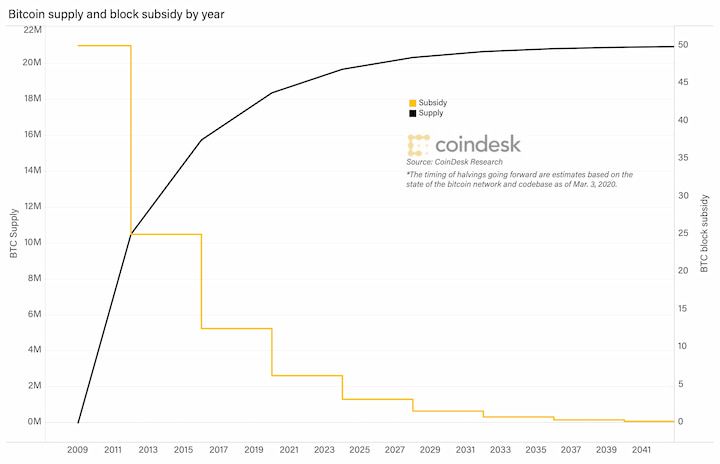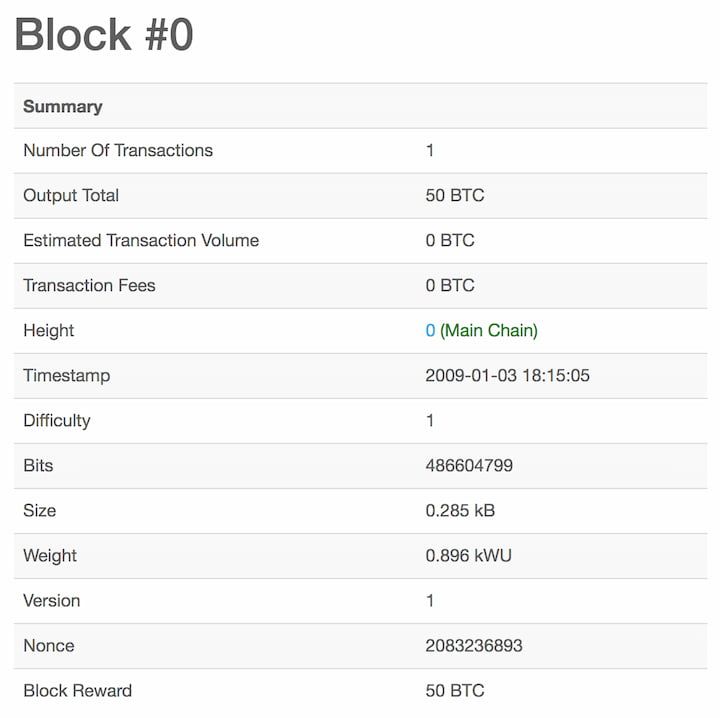Why does Bitcoin circulation change so much? The amount of Bitcoin released every day varies based on Bitcoin's reward schedule, dictated by the Bitcoin Halving - which occurs every for years. This guide covers everything you need to know about Bitcoin Halving.
There's a limited amount of Bitcoin in existence, an essential aspect of its ability to store value. However, until the last Bitcoin is mined, the number in circulation is constantly changing, meant to help factor in supply and demand. If there can only be so much Bitcoin, demand is expected to rise as supply diminishes.
What is Bitcoin Halving?
Bitcoin might be all code, but that doesn't mean it is infinite. In fact, Bitcoin is quite limited, which helps provide an aspect of its value. There can only ever be 21 million Bitcoin in total. What's interesting about all of that Bitcoin, however, is that it's not all in circulation.
When miners validate a block, they're rewarded in Bitcoin (BTC) as payment. At that time, new Bitcoin is released into circulation. Users send and receive funds with a publicly viewable Bitcoin wallet address.
There are a number of supported crypto wallet types, including hardware, software, and paper wallets. That said, only a certain amount of Bitcoin is released each time, and this number changes every four years or so due to the Bitcoin Halving.
How Does Bitcoin Halving Work?
Satoshi Nakamoto envisioned Bitcoin as a limited-supply entity to bring it value. Their thought process was along the same lines as gold, where a significant portion of the value proposition comes from limitation. The idea is to create an ever-adjusting level of supply and demand, making Bitcoin inflation-resistant. That rarity also inspires others to invest in the asset, as they may not be able to own a whole Bitcoin one day.
A Bitcoin Halving occurs every 210,000 blocks. At that point, which usually takes around four years, miner rewards are cut in half. No one can adjust this value, as it's hard-coded into Bitcoin's network. Many predict the Halving will continue until around 2140, when all Bitcoin will have been mined and released into circulation.

What is a Bitcoin Block?
A Bitcoin block stores transactions made on the network. Each one can only store one megabyte worth of transactions before it is added to the immutable ledger. That process is done by miners, who use computer power to find a unique hexadecimal code to verify each block as unique. Miners confirm transactions were made by the legitimate owner of a Bitcoin private key.
As a reward for their efforts, miners are paid in Bitcoin that releases upon every block mined. This constant promise of rewards keeps miners participating in Bitcoin validation, which in turn ensures that the network consistently runs smoothly.
Bitcoin Halving Implications
Each Bitcoin Halving brings with it a few potential changes. Many expect that a Halving will directly affect Bitcoin's price, for better or worse. Some believe that the rarity will increase the asset's value, while others claim lowering rewards will cause miners to leave and make the network less sustainable.
If Bitcoin's value fails to go up after a Halving, miners have no reason to continue their efforts, as they're getting paid even less for doing so. So far, however, miners appear to be flocking to the Bitcoin protocol. While many do worry that miners will leave the network as difficulty goes up, Nakamoto did program a solution to that fear. When all 21 million Bitcoins are in existence, miners will still earn rewards. Only, these later rewards will come in the form of transaction fees. Basically, miners will continue to earn a share of every fee paid to the network.
The Relationship Between Bitcoin Halving and Bitcoin's Price
When Bitcoin halves, miners immediately start earning less in terms of rewards, half of the amount previously rewarded. Price speculations abound upon every halving, though Bitcoin's value usually trends upward in anticipation for each one.
As of this writing, there is around 2.3 million Bitcoin left to be mined.
While impossible to predict accurately, Bitcoin's price has often gone up months after halving. Prices are often up around the time of a halving as well, though they've been known to drop shortly afterward for a time. That sharp drop is likely due to users taking advantage of the news and selling during all of the commotion.
What's more interesting is a halving's long-term effect on Bitcoin's price. Should there be a continued and growing community of Bitcoiners, it's likely Bitcoin will only increase as the deflationary issuance continues. In just twelve years, Bitcoin has gone from practically worthless to over $60,000 each. There's good reason to believe that value will increase even more over future Bitcoin Halving dates.

When Is Bitcoin Halving?
There have only been three halvings in Bitcoin's short existence. Precise future Bitcoin halving dates are not known since it depends on how fast miners mine new blocks. As shown in the Bitcoin halving chart above, these events are expected to take place
The first halving took place in November 2012 - four years after Bitcoin's launch in 2009. At that time, rewards were cut from 50 Bitcoin to 25 Bitcoin. One year later, Bitcoin's price fluctuated from $11 to $1,100.
Four years after that, in July 2016, the rewards were again cut to 12.5 per block with the second halving. The price ranged around $1,000 for months afterward, before rising significantly to $20,000 during the big Bitcoin bull run of 2017.
The third halving occurred in May 2020, leaving Bitcoin block rewards at 6.25 BTC per. By the end of that year, Bitcoin reached $9,000 once again. A few months later, the asset broke $60,000, and has since hovered near the $40,000 to $50,000 mark with periodical fluctuations.
The next Bitcoin halving is expected to take place sometime in 2024.
A halving takes place every four years because that's what Nakamoto programmed into the Bitcoin network upon its creation. Every miner is aware of this process when they start, and likely account for it in their long-term finances. Whether or not miners continue flocking to the network is yet to be known, but the process will continue every four years regardless.
Conclusion
Bitcoin Halvings remain one of the most fascinating aspects of blockchain technology. How will the next Bitcoin Halving date impact the price in the long term? Will miners be put off by these changes, or will they push through? How will all 21 million Bitcoin be divided up when all is said and done? We'll surely find out as the Bitcoin network progresses.
📧Komodo Newsletter
If you'd like to learn more about blockchain technology and keep up with Komodo's progress, subscribe to our newsletter. Begin your blockchain journey with Komodo today.

